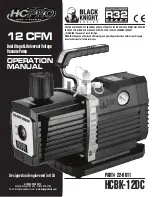
6 Preparation
Installer reference guide
22
ERLQ004~0 EHVH/X04+0 EHVH/X08S26CA
Daikin Altherma - Low Temperature Split
4P313775-1C – 2012.11
>5
0
0
>10
>10
(mm)
Do NOT install the unit in places such as:
▪ Where there is mist of mineral oil, oil spray or vapour.
Plastic parts may deteriorate, and cause them to fall out or water
to leak.
▪ Do NOT install the unit in sound sensitive areas (e.g. near a
bedroom and the like), so that the operation noise will cause no
trouble.
Note: If the sound is measured under actual installation
conditions, the measured value will be higher than the sound
pressure level mentioned in "15.10 Sound spectrum" on page 103
due to environmental noise and sound reflections.
▪ The foundation must be strong enough to bear the weight of the
unit. Take the weight of the unit with a domestic hot water tank full
of water into account.
Make sure, in the event of a water leak, water cannot cause any
damage to the installation space and surroundings.
▪ In places with high humidity (max. RH=85%), for example a
bathroom.
▪ In places where frost is possible. Ambient temperature around the
indoor unit should be >5°C.
▪ The indoor unit is designed for indoor installation only and for
ambient temperatures ranging 5~35°C in cooling mode and
5~30°C in heating mode.
6.2
Preparing refrigerant piping
6.2.1
Refrigerant piping requirements
▪ Use piping with annealed temper grade, in function of the pipe
diameter.
▪ The minimal pipe thickness should comply with applicable
legislation. The minimal pipe thickness for R410A piping must be
in accordance with the following table.
Pipe for…
Outer diameter
(Ø)
Pipe thickness
(t)
Liquid
6.4 mm (1/4")
≥0.8 mm
t
Ø
Gas
15.9 mm (5/8")
≥1.0 mm
6.2.2
Refrigerant piping insulation
▪ Use polyethylene foam as insulation material:
▪ with a heat transfer rate between 0.041 and 0.052 W/mK (0.035
and 0.045 kcal/mh°C)
▪ with a heat resistance of at least 110°C
▪ Insulation thickness
Pipe outer diameter
(Ø
p
)
Insulation inner
diameter (Ø
i
)
Insulation thickness
(t)
6.4 mm (1/4")
8~10 mm
10 mm
15.9 mm (5/8")
16~20 mm
13 mm
Ø
i
Ø
i
t
Ø
p
Ø
p
6.3
Preparing water piping
6.3.1
Water circuit requirements
▪ Use the indoor unit only in a closed water system.
Using the system in an open water system will lead to excessive
corrosion.
▪ The maximum water pressure is 4 bar.
Provide adequate safeguards in the water circuit to ensure that
the maximum pressure is NOT exceeded.
▪ All installed piping and piping accessories (valve, connections,…)
must withstand the following temperatures:
INFORMATION
The following illustration is an example and may NOT
match your system layout.
M
M
HPC1
HPC2
HPC3
FHL1
FHL2
FHL3
a
b
c
d
e
f
g
f
h
i
i
i
i
j
k
89°C
65°C
a
Outdoor unit
b
Indoor unit
c
Heat exchanger
d
Backup heater
e
Pump
f
Stop valve
g
Motorised 3-way valve
h
Motorised 2-way valve (field supply)
i
Collector
j
Domestic hot water tank
k
Heat exchanger coil
HPC1...3
Heat pump convector (optional)
FHL1...3
Floor heating loop
▪ Make all water piping connections in accordance with the
applicable legislation and the outlook diagram that is delivered
with the unit, respecting the water inlet and outlet.
▪ Do NOT use excessive force when connecting the piping.
Deformation of the piping can cause malfunctioning of the unit.
▪ Provide drain taps at all low points of the system in order to allow
complete drainage of the water circuit.
Summary of Contents for EHVH/X04+08S18CA
Page 111: ......
















































